Welcome to the world of streamlined efficiency and workplace excellence. In this article, you will embark on a journey through the transformative power of the 5S Audit Checklist. Imagine a workspace where clutter vanishes, everything has its place, cleanliness reigns, procedures are standardized, and a culture of continuous improvement thrives.
The 5S Audit Checklist is your passport to this organized utopia. This article will guide you through a 5S Audit Checklist. You'll know why it's essential, how to create one, and its remarkable benefits.
In this article
Part 1. What Is a 5S Audit Checklist
A 5S Audit Checklist is a structured tool used to assess and improve workplace organization and efficiency. The "5S" in its name stands for Sort, Set in order, Shine, Standardize, and Sustain, representing a set of principles aimed at creating a clean, organized, and highly productive workspace. This checklist helps organizations ensure that these 5S principles are being implemented effectively.
It contains a list of items and criteria for each of the five principles, allowing businesses to systematically review and enhance their processes, reduce waste, and promote safety. 5S Audit Checklists are crucial in maintaining an organized and efficient work environment.
Part 2. Benefits of Conducting a 5S Audit
Conducting a 5S Audit offers many benefits that significantly enhance workplace efficiency and organization. Here are some of the key advantages:
- Improved Productivity. Employees can easily find tools, materials, and information by maintaining a clutter-free and organized workspace, reducing downtime and increasing productivity.
- Cost savings. Thanks to the "Sort" and "Shine" principles, efficient use of resources and reduced waste can lead to cost savings in materials and time.
- Quality control. The "Standardize" principle ensures that processes are consistent and that products or services are delivered at a consistently high quality.
- Employee morale. A clean and well-organized workspace is more pleasant to work in, boosting employee morale and job satisfaction.

- Faster Decision-Making. When everything has its designated place and is easily accessible, decision-making becomes faster and more informed.
- Customer Satisfaction. Consistency in processes and improved product quality often lead to higher customer satisfaction and loyalty.
- Compliance and Accountability. Regular audits ensure that employees adhere to established standards and take accountability for maintaining the 5S principles. It can be used in several ways, such as in ISO-13485, procurements, HSE, and product audit checklists.
- Continuous Improvement. The "Sustain" aspect of 5S promotes an ongoing commitment to improvement, which is vital for staying competitive in today's business environment.
A 5S Audit checklist helps organizations reap these benefits by systematically assessing and improving their workplace organization and processes. It's essential for achieving operational excellence and ensuring a positive impact on the bottom line.
Part 3. How To Create a 5S Audit Checklist
Creating a store audit checklist involves a step-by-step process to ensure your workplace adheres to the principles of Sort, Set in Order, Shine, Standardize, and Sustain. Here's EdrawMax will be used as an example tool to show what you need for each part:
Step 1: Sort (Seiri)
- Identify the areas or workspaces to be audited.
- List the specific items or equipment in those areas.
- Determine which items are essential and remove unnecessary ones.
- Create a checklist item for each area, item, or equipment to evaluate.
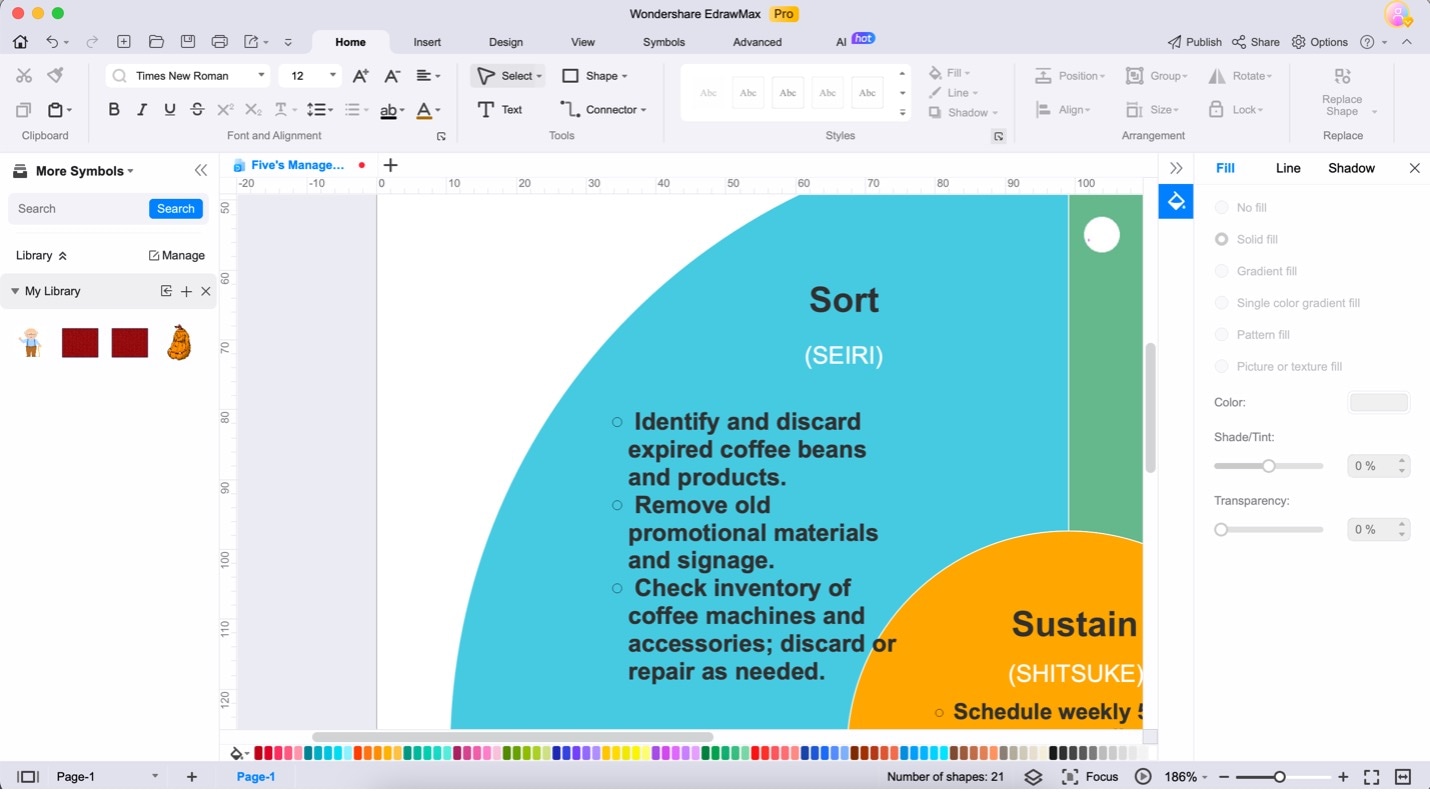
Step 2: Set in Order (Seiton)
- Define the optimal layout and organization of the remaining items.
- Create checklist items for proper storage, labeling, and item placement.
- Consider labeling, color-coding, and visual aids to enhance organization.
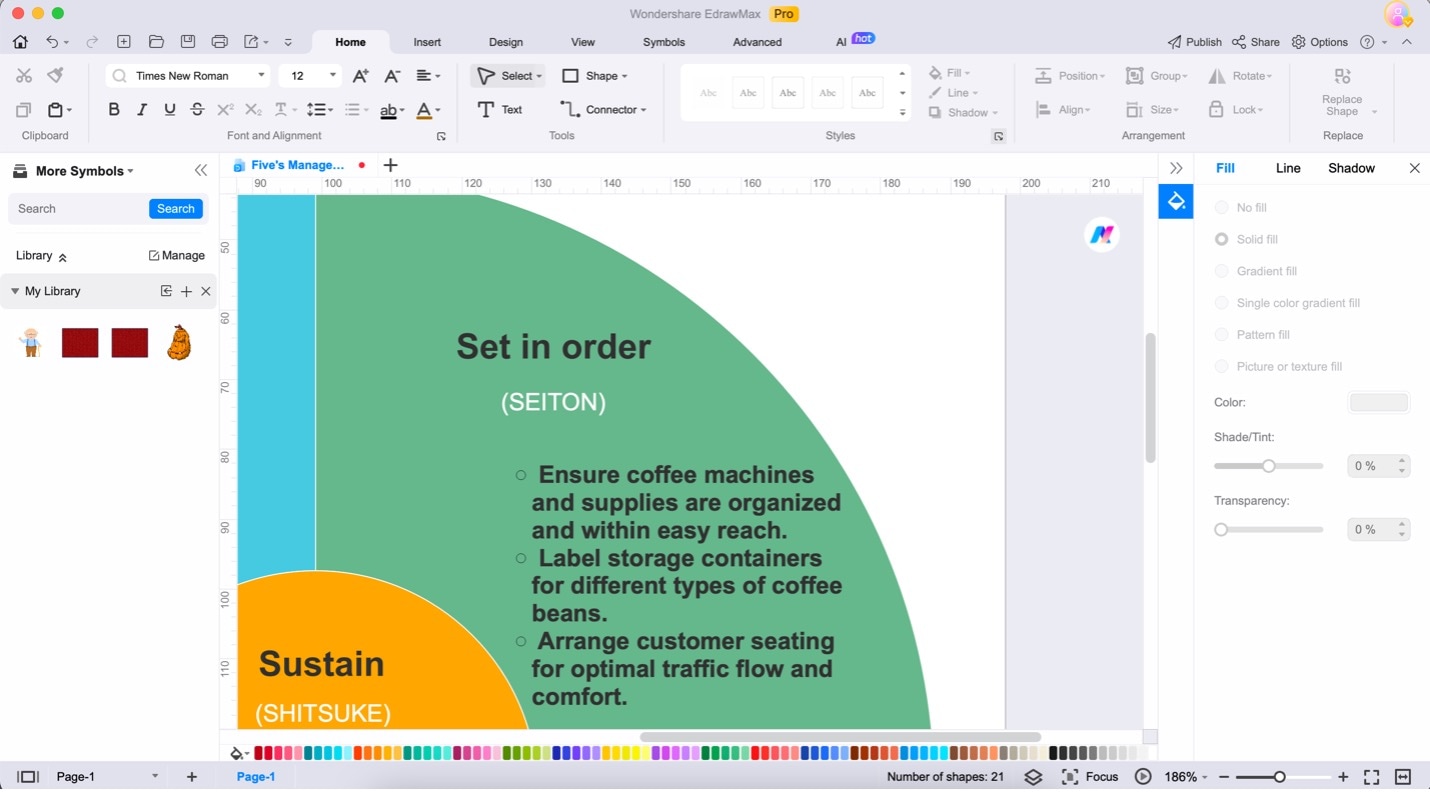
Step 3: Shine (Seiso)
- List cleaning and maintenance tasks for each area or item.
- Include checklist items for regular cleaning schedules and procedures.
- Emphasize the importance of cleanliness and hygiene.
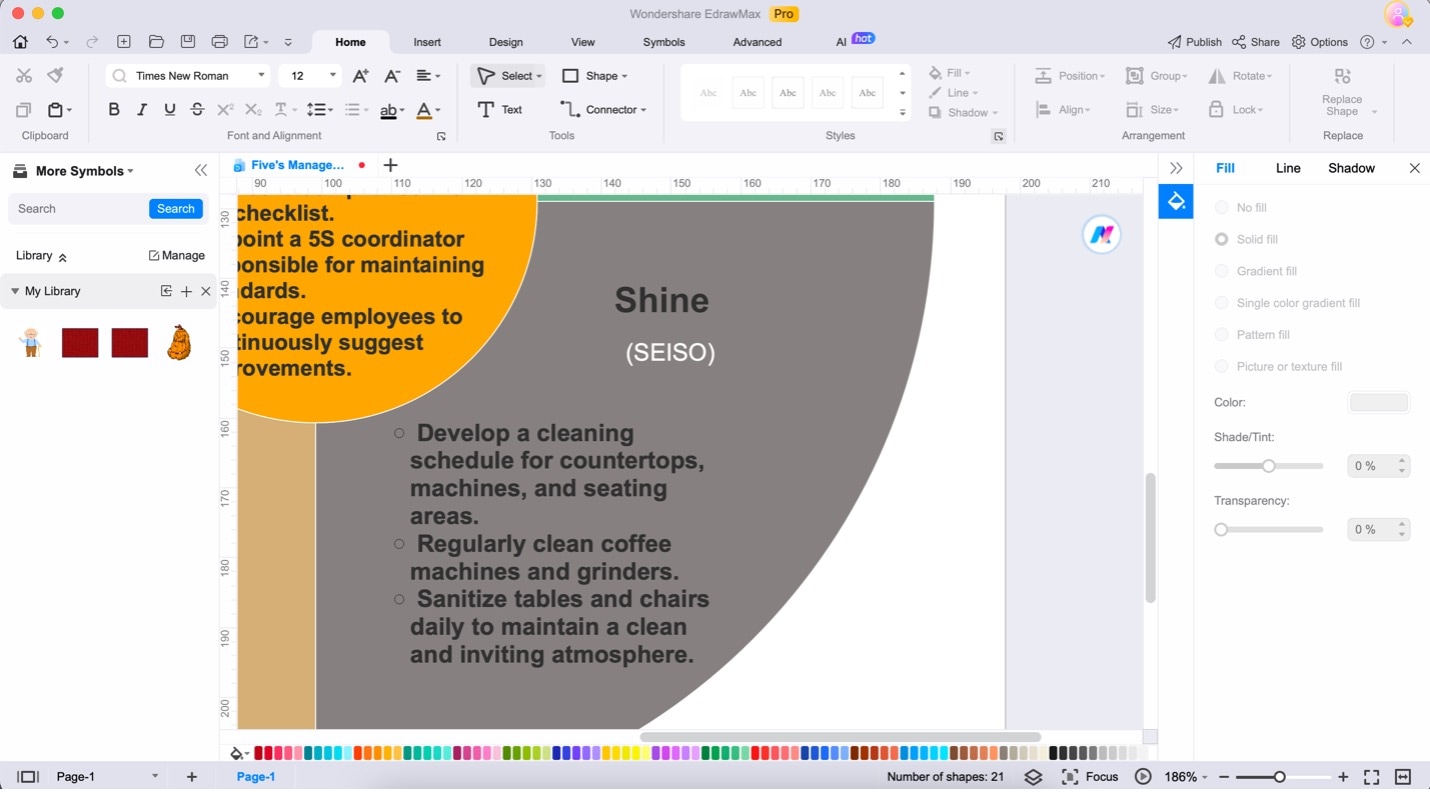
Step 4: Standardize (Seiketsu)
- Document and standardize procedures for each area or process.
- Create checklist items for adherence to these standardized procedures.
- Ensure consistency in processes and practices.
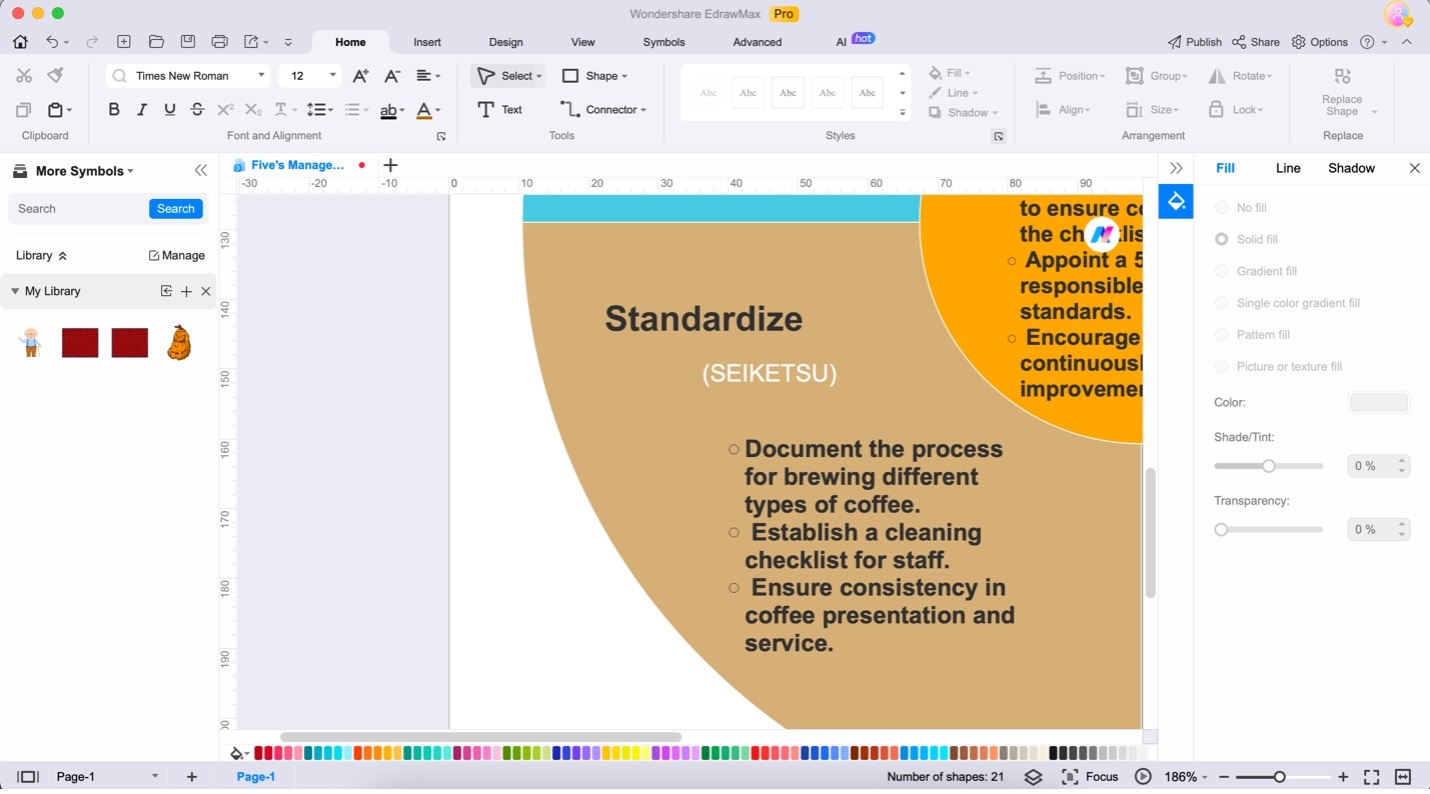
Step 5: Sustain (Shitsuke)
- Include items to monitor and audit the ongoing adherence to 5S principles.
- Schedule regular audits and assign responsible individuals.
- Encourage a culture of continuous improvement and accountability.
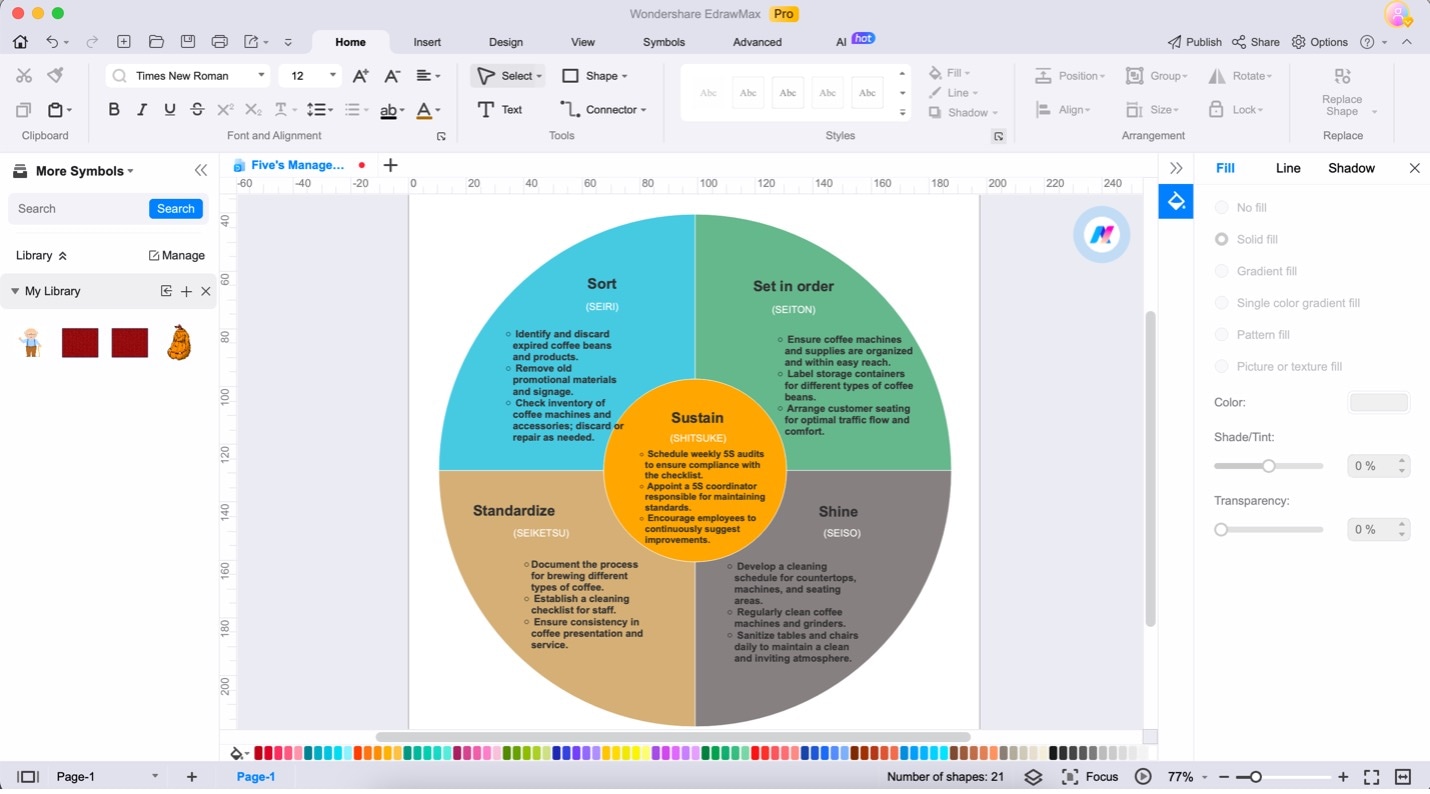
When creating your 5S Audit Checklist, consider using a diagramming tool like EdrawMax for a more organized and efficient approach. This way, you'll have a visual representation of all your 5S plans, making it easier for everyone to see.
Part 4. Key Components of a 5S Audit Checklist
A comprehensive 5S Audit Checklist consists of five key components, each addressing a specific aspect of workplace organization and efficiency:
- Reducing clutter. This component focuses on eliminating unnecessary items from the workspace. It encourages employees to sort through their work areas, identifying and removing items that are no longer needed. This step ensures that only what is necessary for daily operations remains, reducing waste and improving efficiency.
- Organizing workstations. This component of the checklist emphasizes the importance of setting everything in order. It involves assigning a specific place for each item, tool, or document. This component also includes labeling, color-coding, and visual aids to enhance organization further.
- Maintaining cleanliness. The "Shine" component of 5S focuses on cleanliness and regular maintenance. It encourages employees to keep their work areas and equipment clean and in good condition. Cleanliness contributes to a positive work atmosphere and reflects professionalism.
- Standardizing procedures. Standardization is essential for consistency and quality control. This component involves documenting and establishing standardized procedures and best practices.
- Continuous improvement. The final component, "Sustain," is focused on sustaining the gains achieved through the first four components. This includes conducting periodic audits, training employees, and fostering a culture of ongoing improvement.
Conclusion
In conclusion, a well-executed 5S Audit Checklist is a powerful tool that can transform your workplace into a model of organization and efficiency. Organizations can realize numerous benefits by reducing clutter, organizing workstations, maintaining cleanliness, standardizing procedures, and fostering a culture of continuous improvement.
To streamline the creation of your 5S Audit Checklists and make the process even more efficient, we recommend using EdrawMax. With its user-friendly interface and extensive template library, EdrawMax simplifies checklist creation, ensuring that your organization can easily implement and maintain the 5S methodology. It's a valuable tool for driving excellence in your operations.
FAQs
Certainly, here are the answers to the frequently asked questions (FAQs) about the 5S methodology and audits:

- What is the 5S methodology?
The 5S methodology is a systematic approach to workplace organization made up of five principles: Sort, Set in order, Shine, Standardize, and Sustain. It aims to create an organized, efficient, and safe work environment by eliminating clutter, optimizing processes, and maintaining high standards of cleanliness and order.
- Why is sustaining the 5S methodology important?
Sustaining the 5S methodology is crucial because it ensures that the principles become a part of the organization's culture. Without ongoing commitment and maintenance, improved efficiency, safety, and quality benefits may erode over time.
- What are the key benefits of a 5S audit?
A 5S audit helps organizations maintain organization and efficiency by promoting productivity, safety, cost savings, quality control, employee morale, lean operations, customer satisfaction, compliance, and continuous improvement. It's a powerful tool for achieving operational excellence and positive bottom-line impact.





 below.
below. 